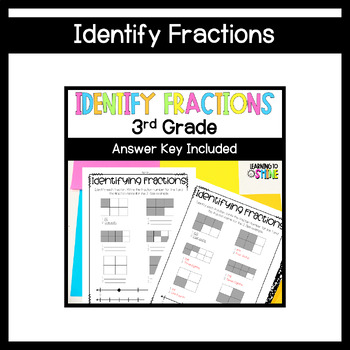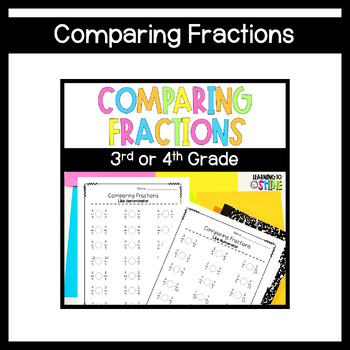Identifying and Comparing Fractions Bundle
Learning to Shine
699 Followers
Resource Type
Standards
CCSS3.NF.A.1
CCSS3.NF.A.2
CCSS3.NF.A.3
CCSS3.NF.A.3a
CCSS3.NF.A.3b
Formats Included
- Zip
Learning to Shine
699 Followers
Products in this Bundle (3)
Description
Looking for a resource to reinforce your students' understanding of Fractions? This bundle will help your students to identify fractions as parts of a whole and on a number line, identify fractions greater than one, and compare fractions with like numerators and like denominators.
Topics Covered
- Fractions Less Than One
- Identify Fractions
- Parts of a Whole
- Number Line
- Fractions Greater Than One
- Comparing Fractions with Like Numerators
- Comparing Fractions with Like Denominators
- Comparing Unit Fractions
What's Included?
- 14 Worksheets
- Answer Keys
Don’t forget that leaving feedback earns you points toward free TpT purchases. I love the feedback. Follow me and be notified when new products are uploaded. As always, contact me with any questions.
Thank you,
Hannah Fox
Learning to Shine
Total Pages
Answer Key
Included
Teaching Duration
N/A
Report this resource to TPT
Reported resources will be reviewed by our team. Report this resource to let us know if this resource violates TPT’s content guidelines.
Standards
to see state-specific standards (only available in the US).
CCSS3.NF.A.1
Understand a fraction 1/𝘣 as the quantity formed by 1 part when a whole is partitioned into 𝘣 equal parts; understand a fraction 𝘢/𝑏 as the quantity formed by 𝘢 parts of size 1/𝘣.
CCSS3.NF.A.2
Understand a fraction as a number on the number line; represent fractions on a number line diagram.
CCSS3.NF.A.3
Explain equivalence of fractions in special cases, and compare fractions by reasoning about their size.
CCSS3.NF.A.3a
Understand two fractions as equivalent (equal) if they are the same size, or the same point on a number line.
CCSS3.NF.A.3b
Recognize and generate simple equivalent fractions, (e.g., 1/2 = 2/4, 4/6 = 2/3). Explain why the fractions are equivalent, e.g., by using a visual fraction model.





